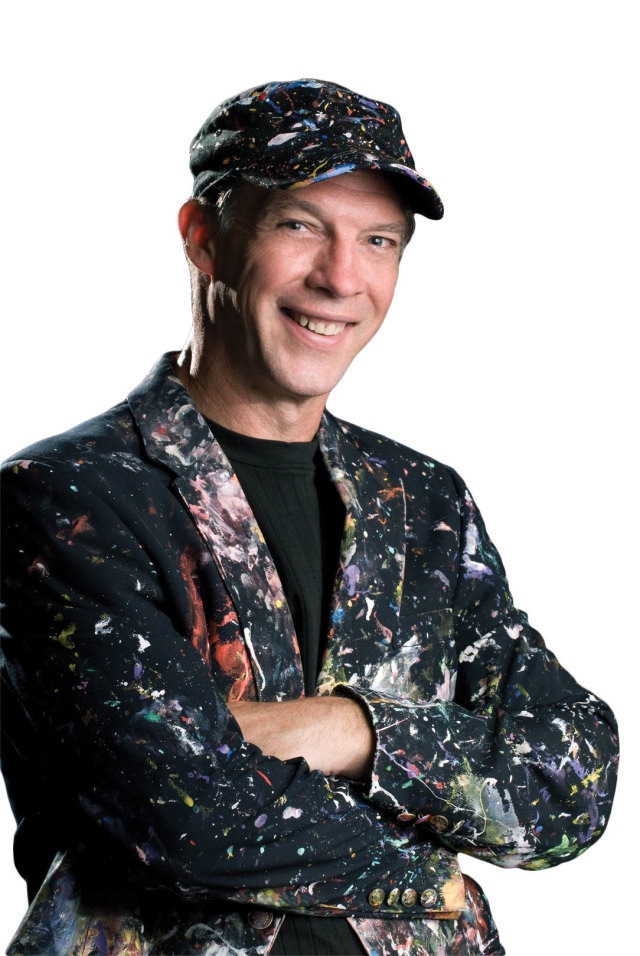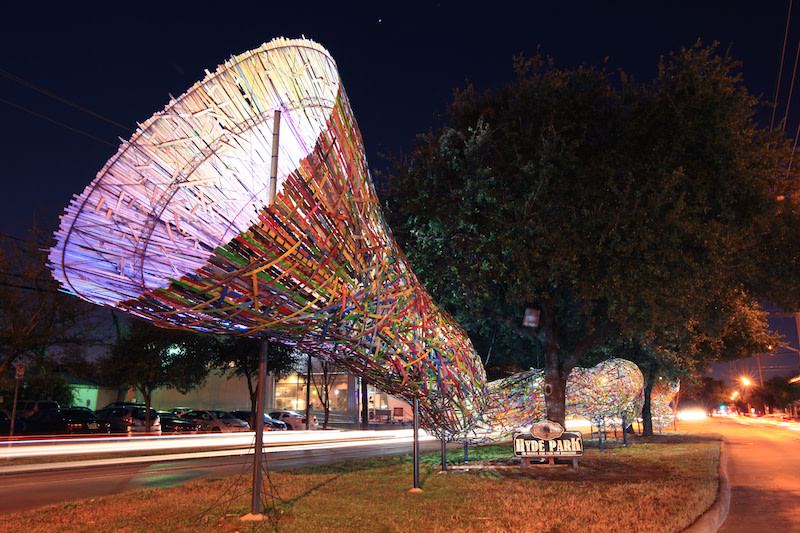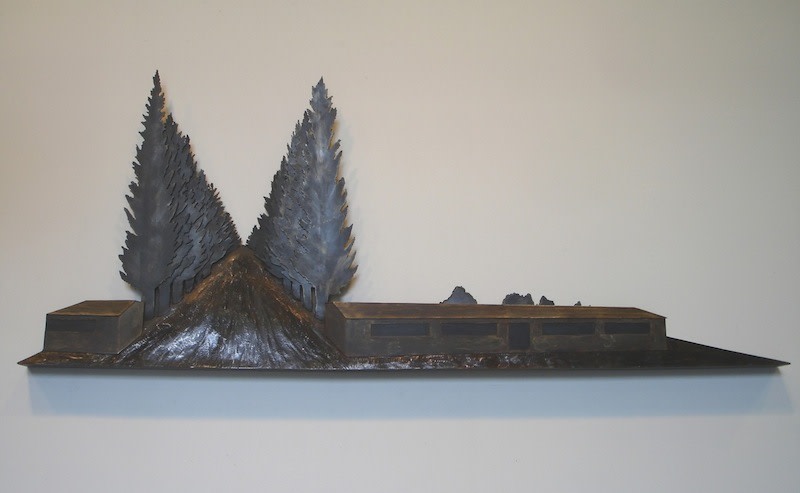![]()
Toshio Matsumoto, For the Damaged Right Eye, 1968, film still from triple 16mm (transferred to DVD), collection of the artist
For a New World to Come: Experiments in Japanese Art and Photography, 1968–1979
Thru July 12
$15; Thursdays free
Museum of Fine Arts, Houston
1001 Bissonnet St.
713-639-7300
mfah.org
Last week, a groundbreaking new exhibition devoted to post-WWII Japanese art opened at the Museum of Fine Arts, Houston. For a New World to Come: Experiments in Japanese Art and Photography, 1968–1979 includes some 250 works ranging from photo books, to short films, to paintings and sculpture, and examines the efflorescence of the Japanese avant-garde in the late ’60s, when, as in Europe and America, a new counterculture rose up to protest government policies and challenge social restrictions.
In Japan, discontent focused specifically on the impending renewal of the country’s controversial security treaty with the US; the massive expense of staging the 1970 Tokyo Expo (which would end up costing the country about as much as it spent in World War II); the American military bases on Okinawa; and the Vietnam War, in which many Japanese citizens felt the country, as a US ally, was complicit. Like their Western counterparts, Japanese students occupied university buildings and staged massive protest marches. Artists swept up in the anti-authoritarian energy used photography, film, and more traditional media to challenge both aesthetic and social convention, often in the pages of avant-garde magazines like the fittingly titled Provoke, which lasted only three issues but introduced the highly influential are bure boke (rough, blurred, out-of-focus) style characteristic of much of the exhibition’s photography.
The exhibition was organized by Yasufumi Nakamori, the MFAH’s associate curator of photography, with the help of Allison Pappas, the museum’s curatorial assistant of photography. Nakamori was born in Japan in 1968 and grew up in Osaka. His major new essay, “Experiments with the Camera: Art and Photography in 1970s Japan,” is included in the 250-page exhibition catalogue along with contributions from 11 other scholars and curators. The show is on view in the MFAH’s Beck Building until July 12, after which portions of it will travel to two New York venues: NYU’s Grey Art Gallery (Sept 11–Dec 5) and The Japan Society (Oct 9–Jan 11).
We sat down with Nakamori and Pappas at the MFAH earlier this week to discuss the show.
![]()
Keiz? Kitajima, Installation Photograph of the Exhibition Photo Express: Tokyo, 1979, inkjet print, collection of the artist
Houstonia: How did the idea for this exhibition first come about?
Yasufumi: I wrote a dissertation about 10 years ago [at Cornell] focusing on the ’50s and ’60s in Japan. I looked into what happened in architecture during that period, and architects’ collaborations with artists and writers—that kind of cross-pollination of media. The late ’60s are very important, not only for Japan but everywhere in the world—everything was transforming at the time. [Now], as a curator of photography, I wanted to find a way to frame the importance of photography at the time. So naturally we looked into artists, paintings and sculptures, and even architects. I also wanted this exhibition to examine the emergence of photo-conceptualism. There was an exhibition at the Art Institute of Chicago, Light Years[2011], that examined photography and conceptual art, and that show did not have any artists from Asia or Latin America—it was really kind of a North American and European–centric exhibition. Then there were two exhibitions of postwar Japanese art in the last few years in New York, at The Museum of Modern Art [Tokyo 1955–1970: A New Avant-Garde] and the Guggenheim [Gutai: Splendid Playground], but photography was excluded from the dialogue. The MOMA show used photographs only to document performance art.
Pappas: It was didactic. They used them as illustrative material, not works of art.
Yasufumi: So we felt there was a need for a show focusing on photography as a medium that enabled artists to create their experimental moment as society made a seismic transformation in the late ’60s. Our schools and systems were shutting down because of protests, so the artists in this period had a lot of freedom. And there was strong anti-American sentiment throughout the nation because of the Vietnam War and Japan’s role in it, because of our treaty with America. A lot of research has been done by curators and academics, but photography hasn’t really been discussed at all.
![]()
Takuma Nakahira, from Circulation: Date, Place, Events, 1971, gelatin silver print, printed 2012, the Museum of Fine Arts, Houston, Museum purchase funded by Joan Morgenstern, Peter Lotz, and Photo Forum 2013.
Why do you think that is?
Yasufumi: From the perspective of Japanese art history, photographic history is relatively neglected. It is important, people realize that, but it still comes second to mainstream art history. And there aren’t enough people who cover that kind of history in the US—there’s only about five of them, basically. And also I think it’s getting harder to do nation-focused exhibitions, because art, after all, is a global practice. But this show is not just about Japanese art and photography; it’s about how the artists relate to the wider global dialogue on photo-conceptualism. So this show has many roles other than just showing specific works and artists from Japan.
Pappas: It strikes me that when people have focused specifically on photography in postwar Japanese art, they celebrate Provoke—that’s the work that we show in the first gallery—as the culmination of what was happening. That was so critical and so influential and so important that it’s gotten all the attention. It’s just that people haven’t really taken the next step to move into the following decade.
Yasufumi: There have been a few exhibitions focusing on the are bore boke style—the San Francisco Museum of Modern Art did a kind of superficial exhibition devoted to that aesthetic. But I thought it was important to discuss what happened after that, in the ’70s.
![]()
Shigeo Goch?, from Self and Others, 1975–77, gelatin silver print, printed 1992, the Museum of Fine Arts, Houston, Museum purchase funded by the Meyer Levy Charitable Foundation. © Hiroichi Goch?
My understanding from the exhibition is that in the ’70s Japanese art turned away from the political a bit. It started looking more inward, became more formalist, sort of like in the US with post-minimalism. Why do you think after that tremendous burst of cultural energy in the late ’60s there was a cooling down in the ’70s?
Yasufumi: There was a kind of big bang—there was the Tokyo Expo in 1970, and the security treaty was renewed the same year. I would really argue that the Japanese avant-garde—in art, music, photography, literature, and so on—ended in the late ’60s. It was a worldwide phenomenon—look at someone like Michael Graves, who passed away last week. Postmodern architecture really emerged in the ’70s.
Allison: I think it’s also cyclical—every time you have an artistic movement that’s so extreme and breaks so many boundaries, you have to take stock and see where you go from there. That moment of pause is almost built into such an explosion.
Yasufumi: The Expo was an incredible national event. It cost Japan as much as the war, basically. So when that was achieved, there was a kind of fall from that. There was a loss of shared objectives among radical thinkers and creative professionals. And of course the oil crisis was a big deal in Japan—it caused an economic recession. I grew up in the ’70s myself, so I grew up in post-Expo culture. And I’ve always been very curious about the ’70s.
![]()
Shigeo Goch?, from Familiar Street Scenes, 1978–80, chromogenic print, the Museum of Fine Arts, Houston, Museum purchase funded by Joan Morgenstern. © Hiroichi Goch?
What are your memories of growing up in that environment?
Yasufumi: I remember this Expo tower—it’s a sculptural piece. All the Expo pieces sort of became ruins, because they were meant to be taken down after six months. I remember the remnants of the war. I would go to one particular museum in downtown Osaka with my father as a child—age 7 or something. To get to that museum we had to go through a tunnel, and I remember seeing some people who didn’t have their legs and arms, and they were still wearing their army uniforms—those were the veterans of the war. 30 years after the war there were still people who carried the physical memories. So the ’70s were complex, personally—it was a mix of the past and the future.
Did people talk about the war?
Yasufumi: Oh yes, people talked about it. But the cities had been rebuilt—Osaka was rebuilt by the end of the ’50s, I think. So there was an interesting gap between what I heard about the past and what I saw growing up. Most of the scholarship done on postwar Japanese art stops at 1970, for the reason I discussed. We feel that the avant-garde died at the end of the ’60s, so there’s not much research on the ’70s and afterward.
Do you agree with that assessment, that the avant-garde is dead?
Yasufumi: Yes, I do. Don’t you?
The latest in Houston events, arts, and culture, delivered straight to your inbox every week.
(See an example!)







































